Ultra Probe lifeboat
The command module of the Ultra Probe separated to form a lifeboat. The window shape resembles the Eagle and other Earth spaceships. It features top escape hatch. There are four large rear boosters, and side attitude control boosters. The insignia is a triangular motif with a large arc and stars along the top edge (the arc resembles a Star Trek Federation symbol).
This was built as a separate 48cm model with the front section of the Ultra Probe, in scale with the 44inch Eagle.
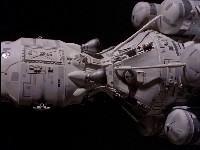
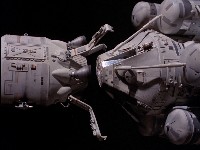
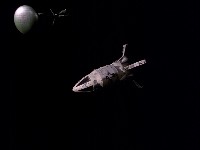
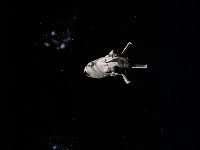
Martin Bower in Sci Fi and Fantasy Models 12: The front of the command module was based on the design of the Eagle's nose, so I had to make a wooden pattern and press mould this in 2 halves in Perspex sheeting. Unfortunately I could not get access to a 44" or 22" Eagle to get a casting to convert as these were in constant use at the studios, so I had to start from scratch. Both the 6' and the large Command Module section noses where done in this way and corresponded in scale to the 22" and 44" Eagles, however the smaller 3' model had a solid wood command module.
Martin Bower's original design sketch for the command module. Text includes "Utilise Eagle nose?", (arrow to top) "access hatch", (arrow to clamp arms) "tensioned to spring outwards", "clamps to main ship", (arrow to rear) "access hatch here", (arrow to side jets) "must have steering jets. Mounting (pole hole) in here on other side"
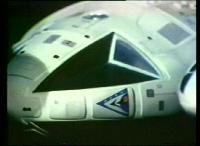
Detail of the insignia, as seen on the 1975 Clapperboard documentary, which shows all three scales of model alongside each other.
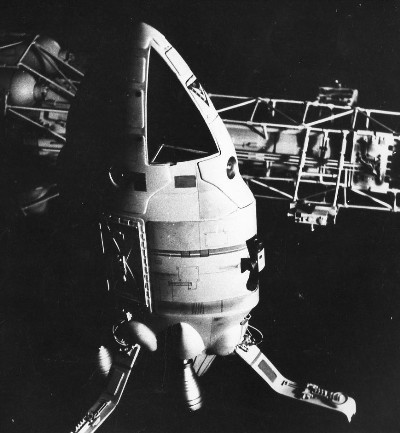
Four arms locked the command module to the Probe ship. The arms were inspired by the locking arms of the domes in the film Silent Running.
Martin Bower in Sci Fi and Fantasy Models 12: I had recently seen the film Silent Running. With the undocking of the Ultra Probe I wanted to recreate something like the scenes in that film where the domes undock from the Valley Forge. To achieve the "glitter" effect, seen as lots of pieces of debris spurt out of the hatches as they are blown, Brian used the same technique as Doug Trumbull. Silica from the element of an old electric toaster was broken up into minute fragments and blown out through the open hatches with compressed air! If you want to know where the idea for this effect came from just look at newsreel footage of the real Lunar Module blasting off from the moon!
(This effect was not used on screen)
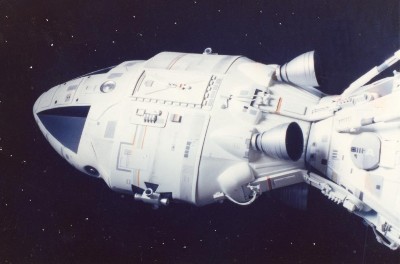
These photos by Martin Bower show the command module when it was originally built and before it was given to the studio, The insignia is not yet in place, and the rocket bells are not yet weathered. Photos thanks to Phil Rae.
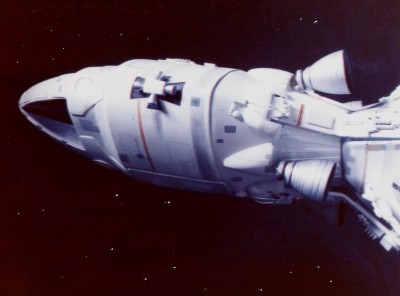
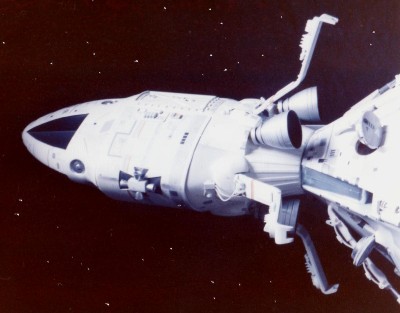
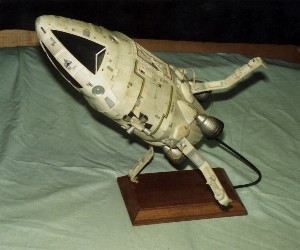
After filming, the model was stripped of paintwork for some reason. It was repainted by Phil Rae around 1977, although unfortunately he had no photo reference. Therefore the panel detailing is completely different; note for instance the different positioning of the original gray and orange lines seen on the original compared to the yellow and green lines of the refurbished model. Photos below thanks to Phil Rae.
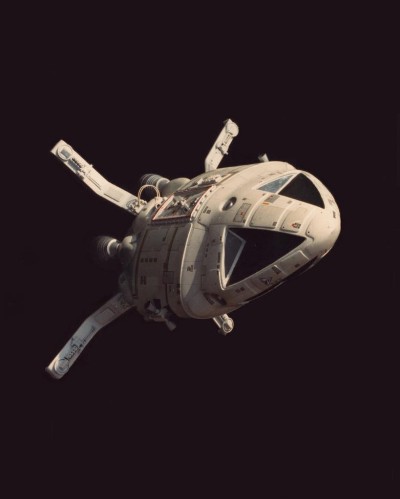
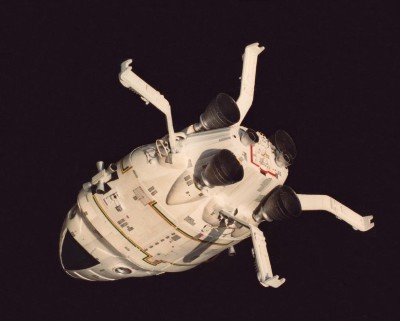
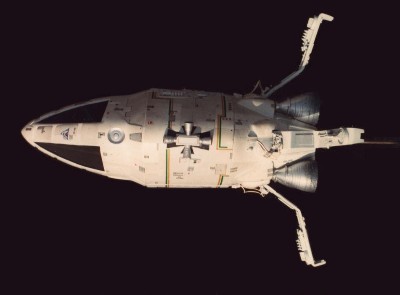
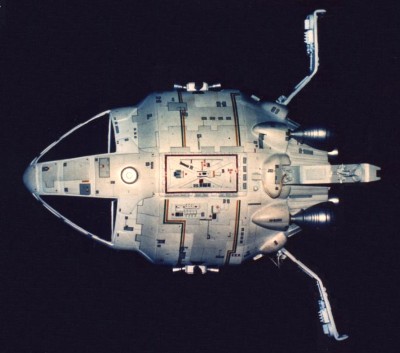
More profile photos on next page.
Copyright Martin Willey